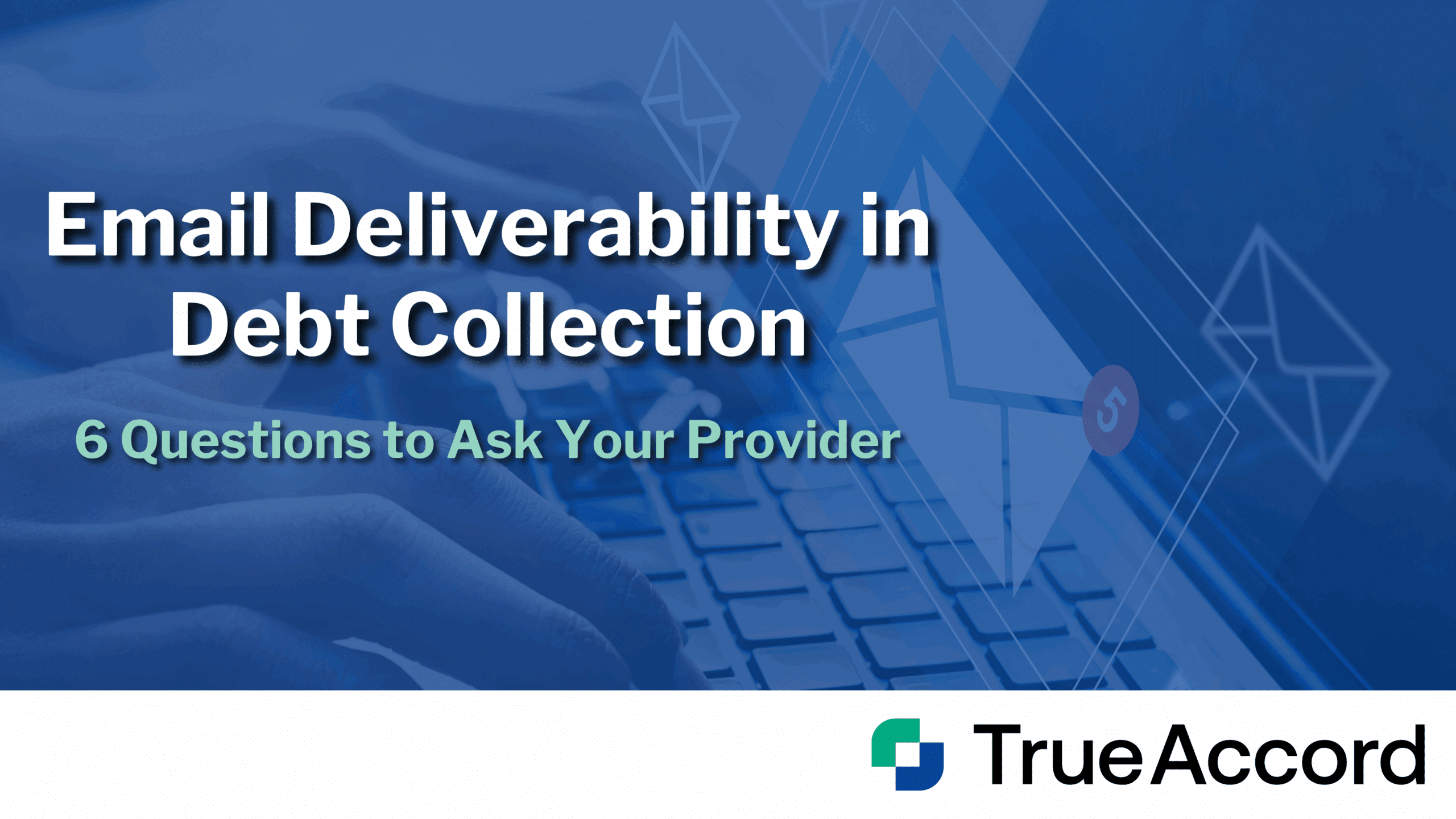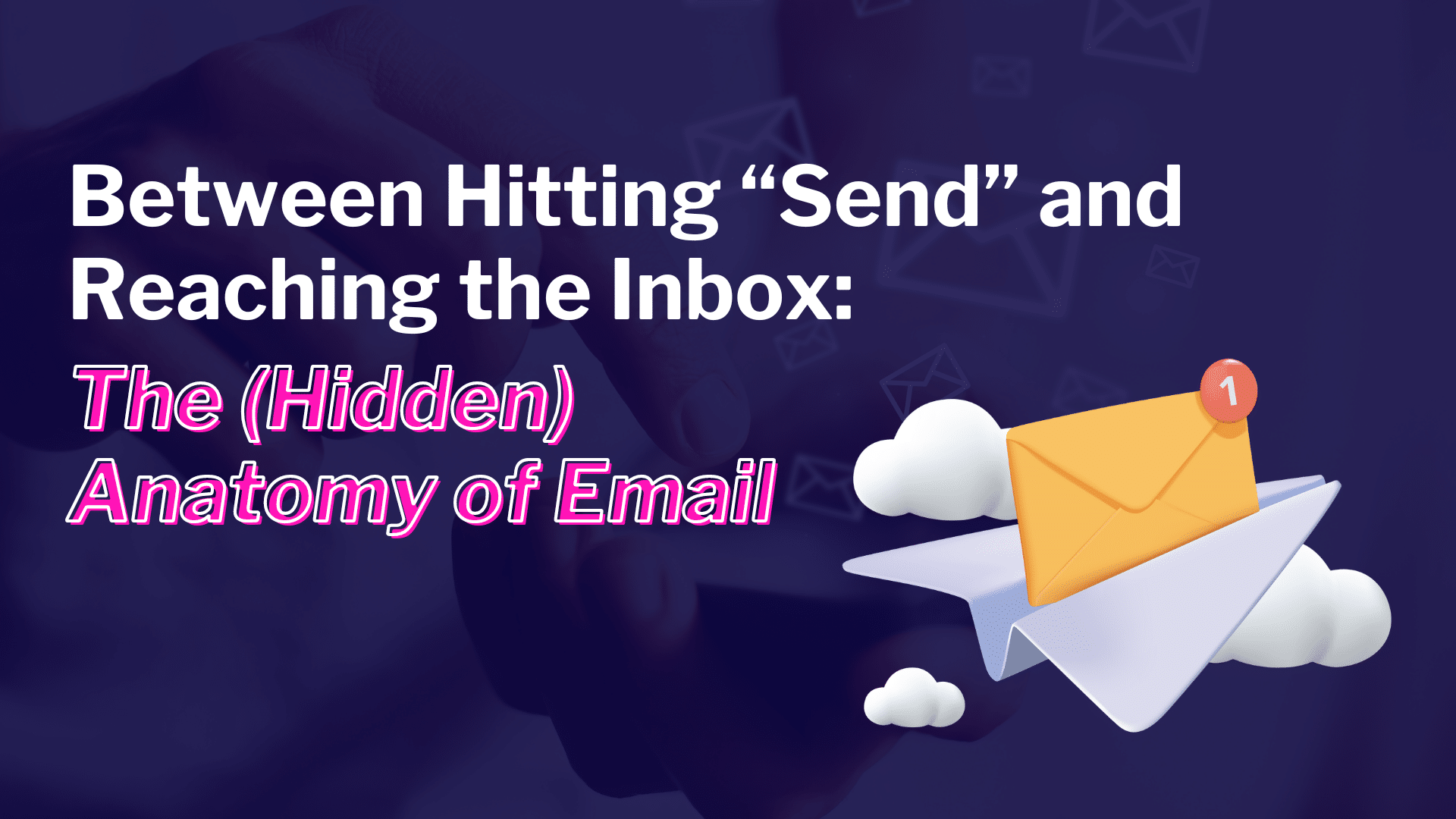
Did you know one of the most common reasons for missing a payment is because customers simply forget to pay their bill?
But staying top of mind for consumers is harder than ever using traditional call-and-collect methods considering stricter compliance regulations and the fact that 94% of unidentified calls go unanswered.
Simply adding email into the communication mix often isn’t enough, and there’s a lot that goes on between hitting “send” and reaching the inbox. For your business to improve performance using digital debt collection, you need a partner with the right expertise.
Let’s look at six key questions to ask your business partners about email deliverability in debt collection, why each question is important, and how TrueAccord measures up.
1) What is Their Primary Method of Communication in Digital Debt Collection?
Why It Matters
The success of traditional call-and-collect methods are waning compared to modern digital engagement due to more consumers preferring digital communications, declining right-party contact rates, and increasing compliance restrictions.
This notion is further proven by recent surveys showing that roughly 40% of consumers prefer to be contacted by email first. And honoring a consumer’s preferences in digital debt collection pays off. In fact, contacting a customer through their preferred channel first can lead to a 10% increase in their payments.
How TrueAccord Measures Up
TrueAccord is a digital first, omnichannel debt collection agency—and has been a leader in digital consumer engagement. The company believes that digital debt collection is a financial service, and needs to cater to the needs of consumers.
2) 2) How Long Have They Used Email as a Form of Communication?
Why It Matters
Many debt collection providers have been slow to adopt digital communication as part of their consumer outreach, and even those who have integrated digital are still refining strategies for optimal outcomes. By choosing a partner who has a history of refining debt recovery email performance, your business will be able to increase collections with strategies that honor consumer preferences.
How TrueAccord Measures Up
From the start of the company in 2013, TrueAccord’s approach to consumer engagement has been digital-first. This notion continues to grow into a robust omni-channel operation through machine learning that’s driven by data from 40 million customer engagements and counting.
3) What is Their Debt Collection Email Delivery Rate?
Why It Matters
Email Delivery Rate refers to the successful transmission of an email from the sender to the recipient’s mail server, measured by emails delivered divided by the number of emails sent. Digital debt collection partners that can achieve a high rate gives your business confidence that communications are getting in front of delinquent customers.
How TrueAccord Measures Up
TrueAccord has a 99% email delivery rate, compared to the average email delivery rate of approximately 90%. It’s one of the main metrics that separates debt recovery email performance of TrueAccord services from the competition.
4) What is Their Email Deliverability Rate?
Why It Matters
Successful email delivery doesn’t mean that it actually makes it into the recipient’s inbox. Deliverability divides how many emails reach the recipient’s inbox, as opposed to their spam folder, by the total number of emails sent. Your domain reputation also has a big impact on email deliverability in debt collection. The better your email reputation, the less likely your communications are to end up in spam folders.
How TrueAccord Measures Up
TrueAccord has a 95% email deliverability rate, compared to the worldwide average of 84.8%.
5) Do They Measure Open Rates and/or Click Rates?
Why It Matters
Measuring open rates (percentage of recipients who opened your email) and click-through rates (percentage of those who clicked on a link in the email) play a dominant role in understanding which communications are resonating with recipients and which are not. With accurate reporting of these crucial debt recovery email performance metrics, your business will be better positioned to optimize your collections strategy.
How TrueAccord Measures Up
TrueAccord has a total open rate 55.19% and total click rate 1.56%, compared to the average industry total open rate of 27.76% and click rate of 1.3%.
6) How Do They Make Adjustments When Email Deliverability and/or Delivery Rates Fluctuate?
Why It Matters
Email delivery and deliverability rates will fluctuate, but how a provider responds and adjusts to these changes is crucial to keeping the rates as high as possible. Every business has unique variables that affect these metrics. By leveraging machine-learning and consumer data, businesses have a better opportunity to keep collection performance high even during times of fluctuation.
How TrueAccord Measures Up
TrueAccord’s dedicated email and deliverability experts proactively monitor and make adjustments, along with using our patented machine learning engine, HeartBeat. This technology helps to improve debt recovery email performance by optimizing communication engagement over time.
Ready to Reach Optimal Consumer Engagement in Your Debt Collection Operations?
Is your business ready to improve its digital debt collection strategy? Start by scheduling a consultation to learn more about what influences email delivery and deliverability rates and how TrueAccord consistently performs above the rest. Our email and deliverability experts are happy to talk through how your debt recovery email performance can be improved.
